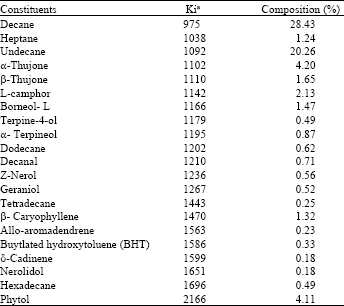Research Article
Chemical Composition of the Essential Oil from Solanum pseudocapsicum
Department of Botany, University of Fort Hare, Alice, 5700, South Africa
D. S. Grierson
Department of Botany, University of Fort Hare, Alice, 5700, South Africa
A. J. Afolayan
Department of Botany, University of Fort Hare, Alice, 5700, South Africa









